With global efforts intensifying to reuse, reduce, and recycle plastics and embrace sustainable materials for a greener environment, Japan has introduced a groundbreaking innovation. They’ve developed “Transparent Cardboard” to address key pain points in packaging, merging the best properties of both plastic and paper. This material is transparent like plastic, strong like paper, water-resistant, and reusable, significantly contributing to reducing plastic waste.
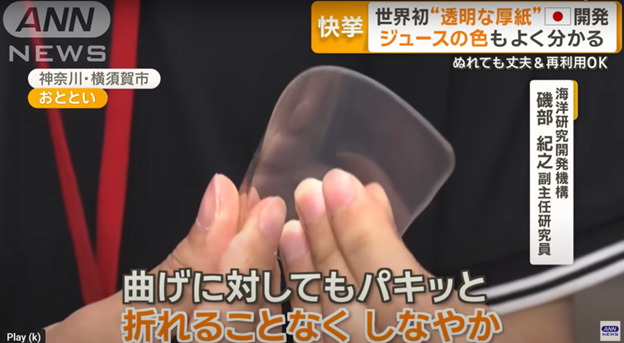
Special Properties of “Transparent Cardboard”
This innovative “Transparent Cardboard” boasts several distinctive characteristics, making it a game-changer in the packaging industry:
- Transparent like Plastic: This property allows consumers to clearly see the color of the liquid or product inside, such as juice or tea. This visual appeal can significantly enhance the attractiveness of the packaged goods.
- Strong Even When Wet: Unlike conventional paper, which typically weakens or tears easily when exposed to water, this new type of paper maintains its form and strength even when wet.
- Reusable: Similar to hard plastics, this paper can be used multiple times. This reusability significantly contributes to reducing the consumption of single-use materials.
- Foldable and Formable into Boxes or Packaging: Its design flexibility and formable nature mean it can be developed into various packaging solutions, including food containers, gift boxes, or even new types of product labels.
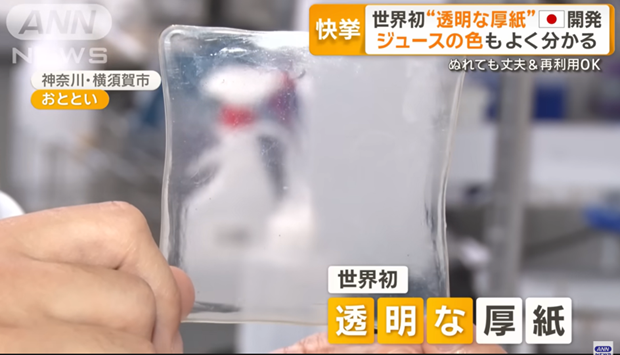
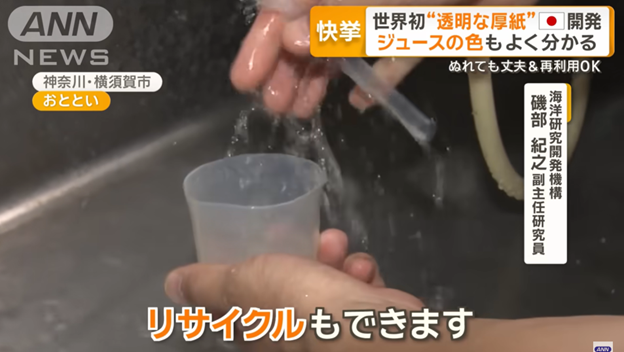
Aim of Development
The primary goal behind the development of Transparent Cardboard is to provide a sustainable alternative to single-use plastics, which remain a major environmental challenge worldwide. This innovation is especially relevant in the packaging industry—for products such as juice boxes, snack containers, and beverages—where consumers often prefer to see the actual color of the product before making a purchase decision. Although it closely resembles plastic in appearance, this material is actually made from cellulose, the same natural component found in paper, making it a more eco-friendly and renewable option.
Environmental Benefits
Switching from traditional clear plastic to transparent cardboard can significantly reduce single-use plastic waste. Moreover, it is easier to recycle compared to many types of plastic. Since the production process utilizes natural materials, it also helps reduce reliance on petroleum-based resources.
Japan’s “transparent cardboard” is a remarkable example of innovation that blends creativity, technology, and genuine environmental consciousness. It not only adds new value from the consumer’s perspective but also marks the beginning of a transformation in the global packaging industry.
As shown in the pictures above, when paper cups, transparent cardboard cups, and plastic cups were submerged in seawater for testing, it was observed that after approximately four months, the transparent cardboard cup had significantly decomposed. In contrast, the paper cup showed partial decomposition, while the plastic cup remained largely intact.
Aim of Development
The primary goal of developing Transparent Cardboard is to provide a sustainable alternative to single-use plastics—an ongoing environmental concern worldwide. This innovation is particularly relevant to the packaging industry, especially for products like juice boxes, snack containers, and beverages, where consumers often prefer to see the actual color of the product before purchasing.
Although it closely resembles plastic in appearance, Transparent Cardboard is made from cellulose, a natural component found in paper. This makes it a more eco-friendly and renewable option.
Environmental Benefits
Transparent Cardboard offers a promising solution for reducing single-use plastic waste. It is easier to recycle than many conventional plastics and is produced from natural materials, thereby decreasing reliance on petroleum-based resources.
Its water-resistant and reusable properties further enhance its environmental value, making it suitable for repeated use while maintaining durability.
A biodegradability test involving paper cups, transparent cardboard cups, and plastic cups submerged in seawater demonstrated the material’s effectiveness: after approximately four months, the transparent cardboard cup had mostly decomposed, the paper cup showed partial decomposition, while the plastic cup remained almost entirely intact.
However, despite its clear environmental benefits, Transparent Cardboard currently faces a significant cost barrier—its production cost is approximately 1,000 times higher than that of conventional plastic at the prototype stage. This is mainly because it is still produced in small quantities and made by hand, which greatly increases the overall cost.

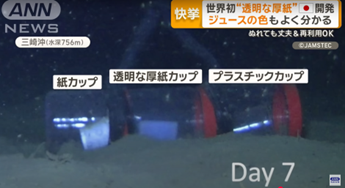
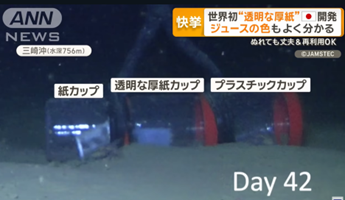
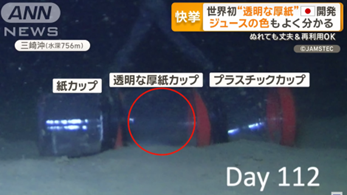
Conclusion
Japan’s Transparent Cardboard is a groundbreaking example of innovation that blends creativity, technology, and environmental responsibility. It not only delivers new value from a consumer standpoint but also signals a transformative step forward for the global packaging industry.
Reference
https://www.youtube.com/watch?v=3qPH8gqZguQ
